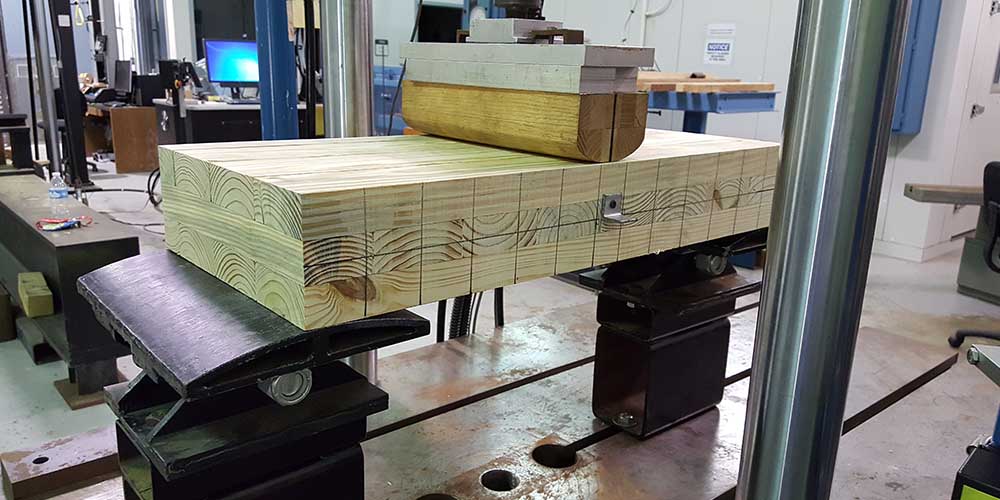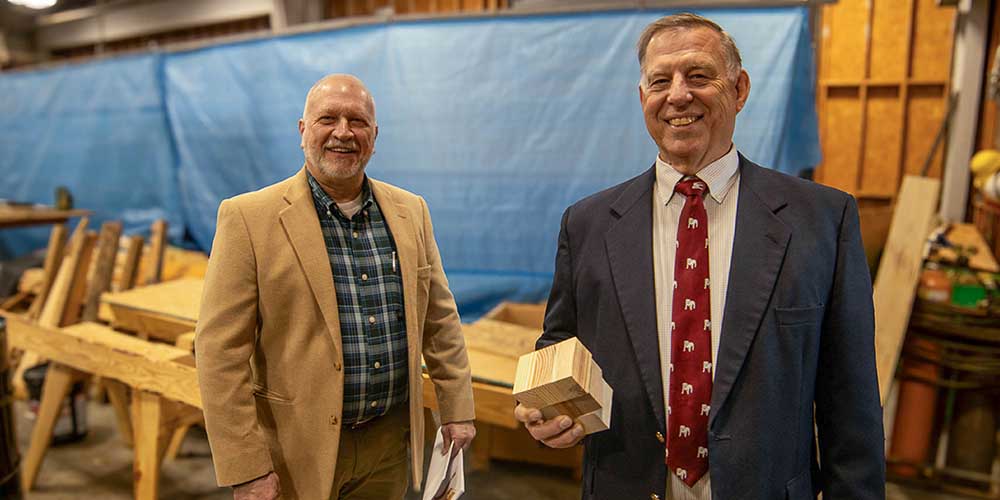Building Materials and Composites Stories

If the Lumber Fits
Cross-laminated timber (CLT) is a new building material with potential to improve home and building manufacturing. FWRC researchers are exploring new ways that CLT can be optimized for building in the humid, hot environment of the Southern United States. Dr. Rubin Shmulsky, sustainable bioproducts professor and head and FWRC researcher, said that CLT is being widely used in tall buildings, as it is fire-resistant and less costly than steel. However, in Mississippi, there is not a great need for tall residential buildings, so scientists explored other uses for CLT that could be used closer to home. The team is exploring CLT as a cost-effective material for building prefab homes, most of which are constructed with steel and evaluating the structural performance of CLT using local softwood and hardwood species to examine the feasibility of using these locally sourced materials for prefab housing.
The team hopes the research will eventually result in easy-to-assemble, affordable and durable housing made with local materials.
2017

Market Barriers
Dr. Dan Seale, a professor in Mississippi State's Forest and Wildlife Research Center, is working to increase the value of undervalued hardwood species like yellow poplar and sweet gum. Through a USDA Forest Service grant, Seale's team has created a database mapping area in the eastern U.S. with high volumes of these species, helping mills locate ideal spots for processing facilities. The goal is to improve the economic value of Mississippi's timberland by finding new uses for these woods. Keith Ward, a doctoral student, is analyzing the suitability of these hardwoods for engineered wood products like I-Joists and structural panels. By developing markets for this timber, the research benefits landowners, mills, and the broader supply chain, creating jobs and boosting the economy.
2023

Using the Resources
Dr. Mostafa Mohammadabadi, an assistant professor at Mississippi State's Forest and Wildlife Research Center, is researching ways to utilize small-diameter and underutilized materials (SDUs) in forests, which are often left unused due to high transportation costs. By developing products similar to cross-laminated timber (CLT) and glue-laminated timber (glulam), SDUs can be repurposed for construction, reducing wildfire fuel and preventing carbon emissions from burning. These wood products are carbon-negative, as they continue to store carbon even after being cut. This research aims to improve forest health, create a market for SDUs, and support sustainable forest management practices. The project also emphasizes education, inspiring students from diverse disciplines to contribute to creating green solutions in forestry and construction.